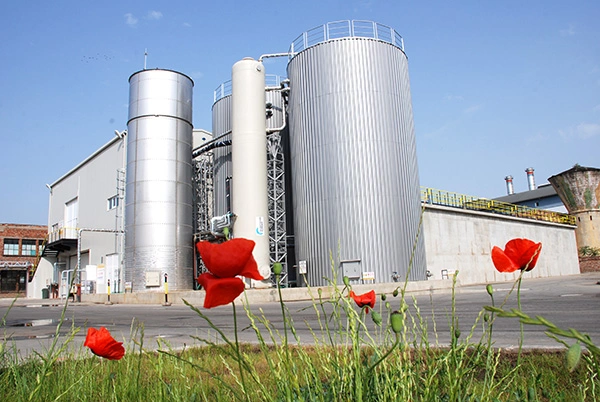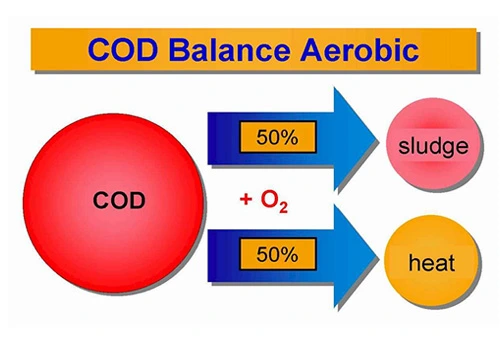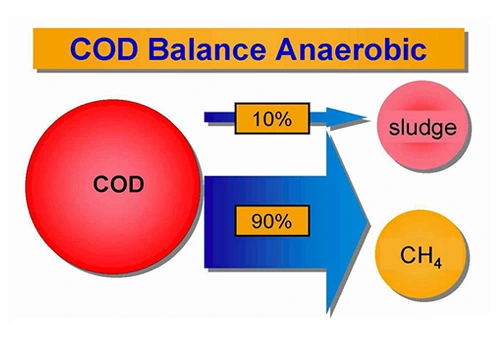Anaerobic treatment vs. Aerobic treatment : Choosing the right wastewater solution
At AquaThane, we believe that every drop of water matters.

Whether you’re managing industrial wastewater or municipal sewage, choosing the right biological treatment method is very important for maintaining a healthy environment and ensuring the safe disposal or reuse of water.
What is wastewater treatment?
Wastewater treatment involves removing contaminants from water to make it safe for discharge or reuse. The treatment process typically includes physical, chemical, and biological methods.
Two of the most effective and widely used biological methods are anaerobic and aerobic treatment. But how do you know which one is right for you? Let’s break it down.
What is anaerobic treatment?
Anaerobic treatment is a biological process where microorganisms break down organic matter in the absence of oxygen. Microorganisms, known as anaerobes, decompose organic pollutants into simpler compounds such as methane (CH4), carbon dioxide (CO2), and water (H2O).
This process occurs in sealed tanks or reactors and is ideal for high-strength wastewater and produces biogas, a renewable energy source, as a by-product.
What is aerobic treatment?
Aerobic treatment relies on microorganisms that thrive in the presence of oxygen to break down organic matter. These microorganisms, known as aerobes, convert organic pollutants into carbon dioxide (CO2), water (H2O), and biomass.
The process typically takes place in open tanks where oxygen is supplied through aeration systems. This process is faster than anaerobic treatment and is highly effective for achieving high-quality effluent.
COD balance
In the wastewater engineering field, organic pollution is measured by the amount of oxygen required for its chemical oxidation. This amount of oxygen is called the “chemical oxygen demand” (COD). which essentially indicates the concentration or content of organic matter. To fully understand anaerobic wastewater treatment, it’s most effective to compare its COD balance with that of aerobic wastewater treatment.


Anaerobic treatment: The COD in wastewater is highly converted to methane, which is a valuable fuel. Very little COD is converted to sludge. No major inputs are required to operate the system.
Aerobic treatment: The COD in wastewater is highly converted to sludge, a bulky waste product, which costs lots of money to get rid of. An aerobic wastewater treatment facility is in essence a “waste sludge factory”. Elemental oxygen must be continuously supplied by aerating the wastewater at a great expense in kilowatt hours to operate the aerators.
No oxygen required.
Generates biogas (methane + CO₂) for energy recovery.
Reduces sludge handling and disposal costs.
Ideal for treating wastewater with high concentrations of organic matter
Delivers quick results for low to medium-strength wastewater.
Effectively removes nitrogen and phosphorus.
Faster than anaerobic treatment.
Meets stringent discharge standards.
Breweries, distilleries, dairies, food
Sludge digestion in municipal treatment plants
Municipal wastewater treatment.
Industries with low to medium organic loads.
Applications requiring nutrient removal.
Anaerobic vs. Aerobic: Key differences
Oxygen Requirement
Byproducts
Energy Consumption
Sludge Production
Treatment Time
Odor
Applications
No oxygen required
Biogas (methane and CO₂)
Low energy input
Low sludge production
Slower process
Can produce odors (e.g., hydrogen sulfide)
High-strength industrial wastewater
Oxygen required
Carbon dioxide, water, and biomass
High energy input (for aeration)
High sludge production
Faster process
Minimal odor
Low-strength municipal wastewater
Which treatment method is right for you?
The choice between anaerobic and aerobic treatment depends on your specific needs:
- Wastewater Characteristics:
– High organic load? Go anaerobic.
– Low to medium organic load? Go aerobic. - Energy Goals:
– Want to produce renewable energy? Choose anaerobic.
– Willing to invest in aeration? Choose aerobic. - Space Constraints:
– Limited space? Anaerobic systems are compact.
– Have more space? Aerobic systems offer flexibility. - Effluent Quality:
– Need nutrient removal? Aerobic is the way to go.
Focused on organic load reduction? Anaerobic is ideal.
Combining anaerobic and aerobic treatment for optimal results
Anaerobic and aerobic treatment systems are often used together to effectively manage wastewater with high levels of organic contaminants:
- anaerobic treatment serves as the initial step to greatly decrease the concentration of organic pollutants.
- followed by aerobic treatment, which functions as a secondary polishing step to further reduce Biological Oxygen Demand (BOD) and Total Suspended Solids (TSS). In some cases, the aerobic treatment phase is also used to convert ammonia into nitrate.
Using a combination of both technologies typically results in more efficient treatment than relying solely on an aerobic system. Additionally, it allows for more effective contaminant removal compared to using only anaerobic treatment.
By understanding the differences and applications of anaerobic and aerobic treatments, you can select the most appropriate solution for your wastewater treatment needs.
If you’re looking for more information or need assistance in selecting the right wastewater treatment system for your facility, feel free to contact us.
Choose wisely and contribute to a cleaner, more sustainable future!



